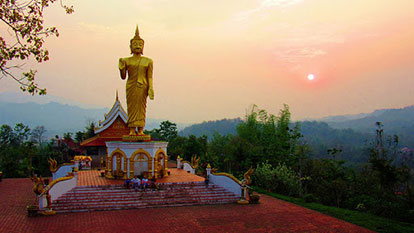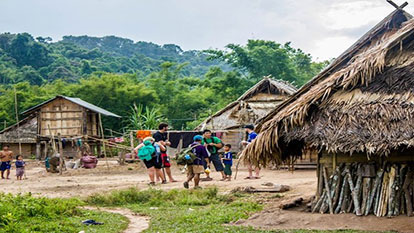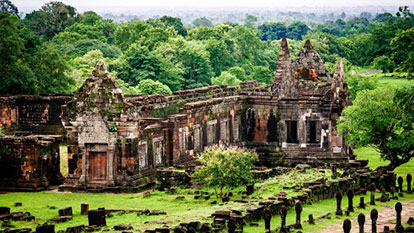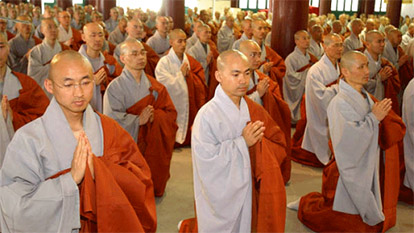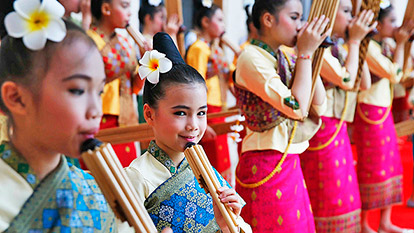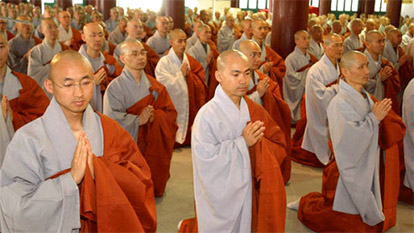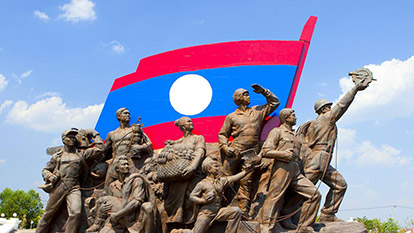Pak Ou caves - Caves in the cliffs on the Mekong filled with 1000’s of Buddha images
Pak Ou caves - Place of worship for centuries
Pak Ou caves have been a place of worship for centuries, as people believed they are inhabited by the spirits of the river. According to Laos legend, the caves were discovered in the 16th century by King Setthathirath, one of Laos’ greatest Kings, who built monuments as the Wat Xieng Thong and the Pha That Luang.
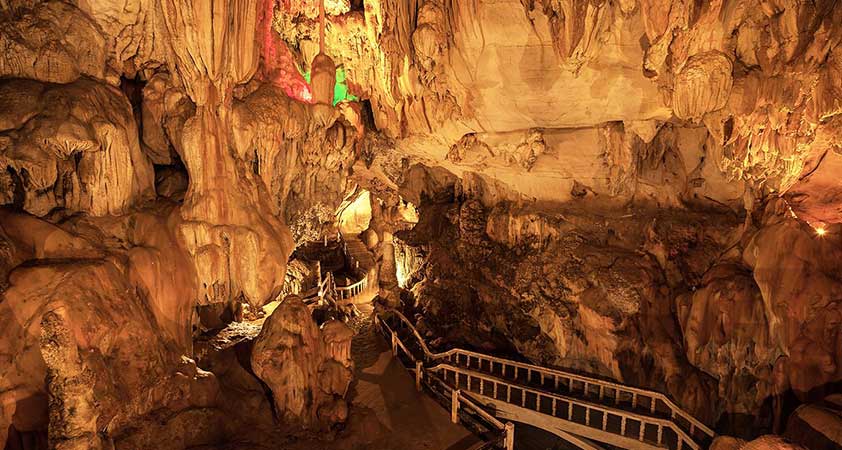
Upper and lower cave
Set in the steep, vertical cliffs in limestone mountains over the Mekong river are two caves. Both the lower and upper caves are filled with numerous Buddha images filling up every nook and corner of the caves. The images are in various mudras and vary in size from several centimeters to fairly large. Many of the centuries old, wooden images are damaged. From the boat landing a stairway leads to the caves, guarded by white lions. Along the way up vendors offer flowers, incense sticks and candles to pay respect to the Buddha images.
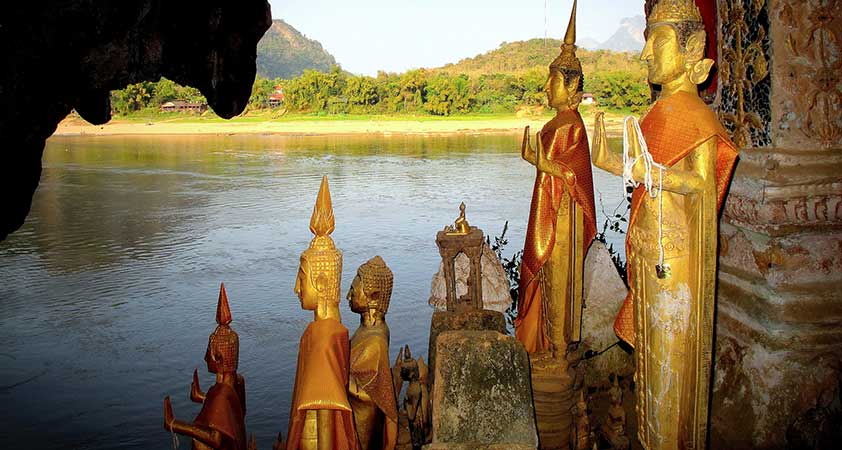
The lower cave called Tham Thing is most easily visited. The small cave is just a short climb from the boat landing and gets enough daylight for good visibility. A series of steps lead to the larger upper cave called Tham Phum, at about 60 meters above the river. This cave is very dark; bring a flashlight or rent one at the cave entrance. During the course of several centuries both caves have been filled with thousands of Buddha images, most of them from the 18th and 19th century.
How to get to the Pak Ou caves
Most fun way to get to the Pak Ou caves is by boat. The trip takes around 2 hours upstream from Luang Prabang with magnificent scenery along the way of the Mekong river and the limestone mountains. The way back downstream takes a little over an hour. At some of the boats it can get noisy near the back, where the engine is. Boats leave Luang Prabang from the boat dock at the Mekong river side near the end of the peninsula. Boats leave at 8.30 am, the fare is 75,000 Kip (about US$ 10). Many of the boat operators stop at the “Lao Lao” whisky village, where you can try several tastes of locally made whisky. If you have a group you can charter a private boat, which should cost between 300,000 and 350,000 Kip (US$ 39 to 45) depending on your bargaining skills and season.
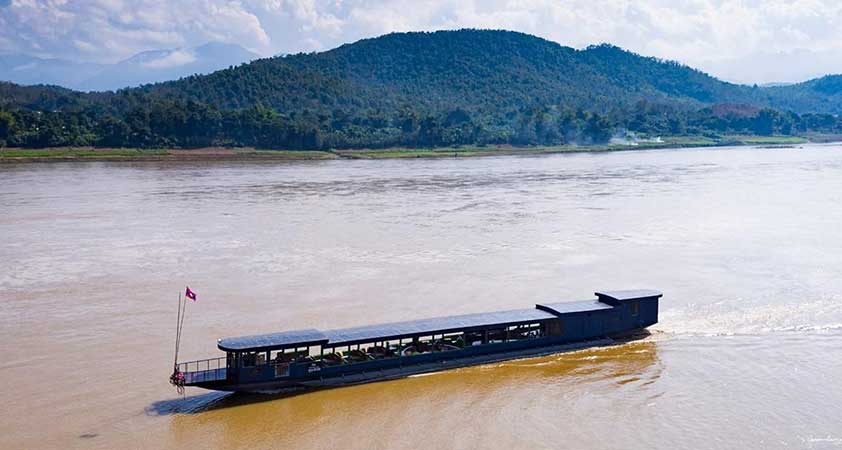
Alternatively, charter a tuk tuk, taxi or minivan to Ban Pak Ou village opposite the caves on the other side of the river. The ride can be bumpy and costs around 200,000 Kip (US$ 26). From Ban Pak Ou village, cross the river by boat at 10,000 Kip (US$ 1.30) per person.
Sincerely yours & see you soon!
GALATOURIST since 2005.
Testimonials

Ms. Francesca Tronconi & Mr Vizzolini Davide (2pax) from Spain

Mrs & Mr. DUPUIS (2pax) from United States

Mr. Jeffrey Szymanski (2pax) from United States

Mrs Rosemary McGuinness (2pax) from Australia

Mrs Elena Maria Sanchez (2pax) from Spain

Group Marissa (4pax) from United States

Mr Jerzy (2pax) from Canada





